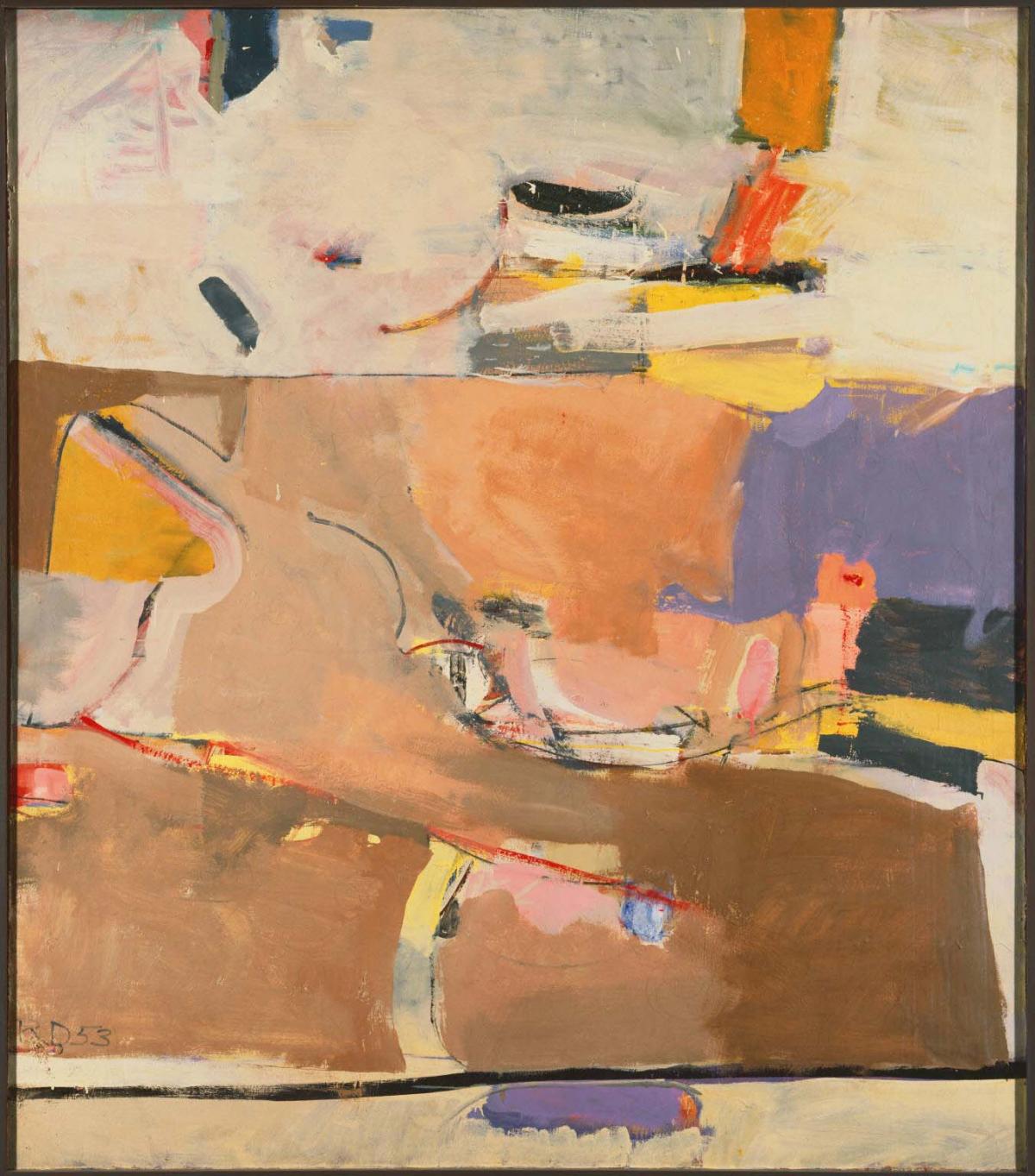Berkeley No. 1
Richard Diebenkorn ( 1953 )

Berkeley No. 1 is the first in a series of more than fifty abstractions painted by Diebenkorn between 1953 and 1955, shortly after his return to Berkeley, California. At this early point in his career, Diebenkorn, who had been painting abstractions since the mid-1940s, clung to the goal of expressive color, non-objectivity, and flatness in his art. His interest in defining his images by color at the expense of line initially stemmed from his lifelong admiration of the works of Cézanne and Matisse, but his purely abstract, non-representational mode reflected the influence of the New York abstract expressionists. In addition, the atmosphere at San Francisco’s California School of Fine Arts during that same period was dominated by the presence of Clyfford Still, who had brought from New York many of the ideals of Gorky, Rothko, and Pollock. By the early 1950s, Diebenkorn’s style incorporated the color expanses of Motherwell, Rothko, and Still, combined with the flesh tones and punctuated, forceful lines of de Kooning. This approach is exemplified by the Berkeley paintings and later became known as the “Western example” of abstract expressionism.
Berkeley No. 1 is a two-dimensional abstraction composed of broad expanses of gestural color highlighted with sketchy, broken tendrils of black paint. At first glance, the composition of spattered and ripped paint appears to have been effortlessly created; however, closer examination reveals that Diebenkorn built up the surface in several layers. He strove for this reworked effect, stating that “the friction and frustration of the try itself are what generate the energy necessary to solve a painting.” The paint texture of Berkeley No. 1 varies widely from heavy impasto to thin wash. While these works have been deemed “abstract landscapes,” Diebenkorn emphasized that dis work didn’t illustrate any particular location, but represented the color, atmosphere, and mood of his surroundings.
Although the Berkeley series was the closest Diebenkorn came to the abstract-expressionist style, it was most important to him in arriving at his own working method, which stressed manipulation and placement of passages of pure color. This method could be adapted to several types of imagery, both abstract and representational, as Diebenkorn was to prove in later work.